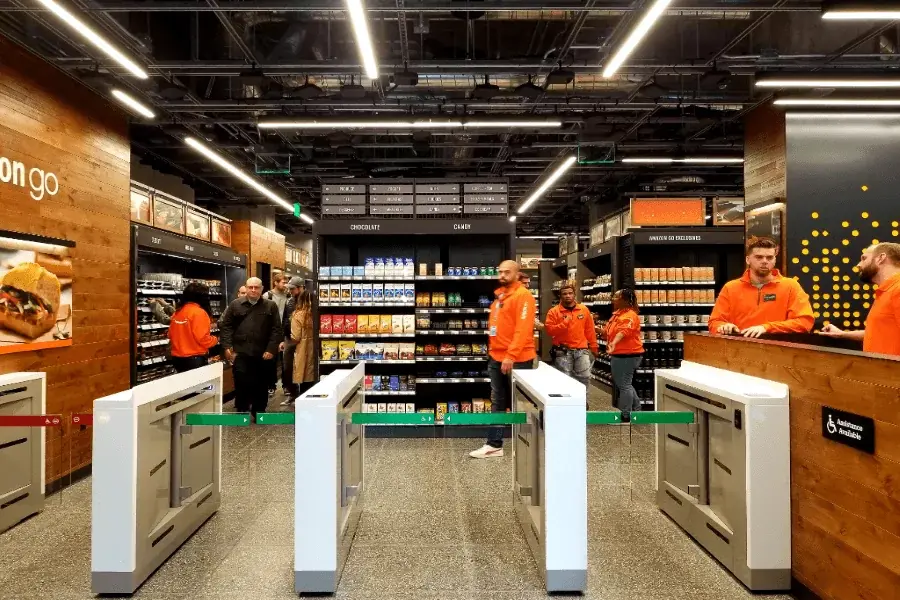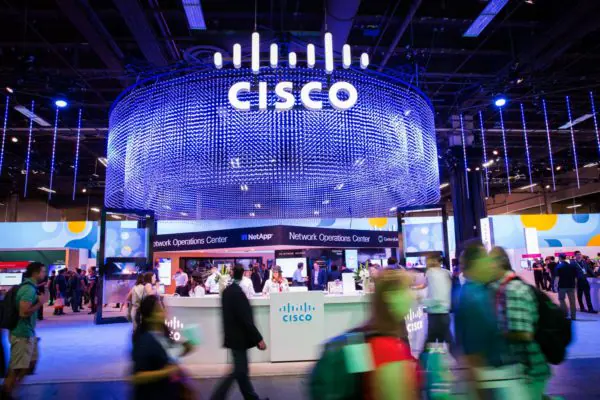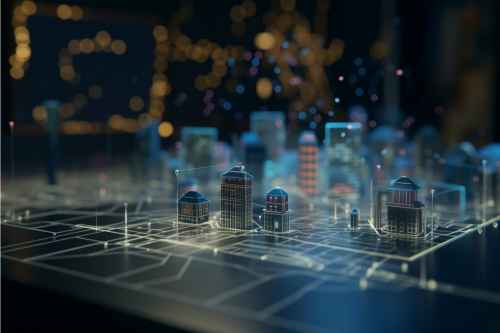Revolutionizing Retail: Top IoT Use Cases Transforming the Industry
Technological advancements are continuing to transform the retail industry, with the Internet of Things (IoT) leading the charge. Research shows that...
![]() Facilities Management
Facilities Management
Manage maintenance requests & streamline operations
CMMS
CAFM
EHS
Regulatory Compliance
PPM
EAM
Operations Management
Transportation Management
![]() Food Safety
Food Safety
Prove compliance and ensure standards are up to customer expectations
![]() Retail Task Management
Retail Task Management
Enable your teams to focus on delivering quality and achieve their goals.
Task Creation & Automated Follow-up
Unified Reporting and Data Analysis
Regulatory and Audit Monitoring
Full visibility of every task
IoT
Take action on your data to get ahead
Integrations
Bring mpro5 into your other tools
Automated Workflows
Make your work effortless with automated workflows
Managed Service
Supporting your operations, every step of the way
NEWS & INSIGHTS
Blogs & news
NEWS & INSIGHTS
GET IN TOUCH
GET IN TOUCH
In today’s radically evolving retail landscape, streamlining operations, while driving productivity and maintaining compliance, are essential for staying competitive. We are now in a new age of digitalization, where technology such as IoT (Internet of Things), is expanding the opportunity for innovation in retail, by revolutionizing how retailers improve workflows, engage with customers, and cut costs. To understand the impact of IoT in the retail space, it’s important to recognize the depth of its capabilities, the untapped opportunities and long-term benefits of the technology.
IoT refers to a collective network of physical objects embedded with sensors, software, and network connectivity, exchanging information and data via the Internet. While IoT is consistently receiving data inputs and information from retailers, the data is often unstructured and siloed, requiring filtering and visualization through smart retail management software, in order to make it actionable and insightful.
From in-store customer engagement to health and safety management, IoT sensors can seamlessly integrate with your existing ecosystem and network for full visibility to every aspect of the business. For example, retailers with IoT integration coupled with a smart process management app can maintain health and safety compliance requirements, ensure quality standards, and proactively improve workflows, such as health and safety logbooks.
Manual reporting with physical paperwork and tracking historically delayed insights and operations for retailers. Today, retailers are focusing on digitizing operations for a more efficient, proactive and ultimately cost-effective approach. By shifting away from manual written reports on information such as store traffic and moving toward integrated IoT devices with smart retail management software, retailers have transformed the way they leverage their data, enabling real-time visibility and data-driven decision making across all operations.
In addition to IoT sensors, interconnected systems, through technology like Radio Frequency Identification (RFID), are the backbone of IoT in retail. By integrating these devices with sensor data, retailers can visualize the status of their operations quickly to determine highest priorities first, while also identifying opportunities to automate tasks and workflows.
The retail space is more competitive now than ever before, with exceptional customer experience vital to a retailer’s success. IoT is revolutionizing the retail space by empowering retailers to create an immersive experience, through smart shelves, personalized marketing, automated checkout, inventory management and more, that drives customer loyalty.
Yes, IoT technology can play an integral role in-store as well. Enabled by smart sensors, retailers can access real-time input data to understand key data points, like store traffic, to determine when increased staff may be needed to ensure a positive experience for customers.
Loss of stock in cold storage facilities can be financially catastrophic for retailers. Effective monitoring and management of cold storage machinery is crucial to retail success. Now, retailers can enable IoT integrations to provide real-time updates on the status of cold storage, alerting management to potential malfunctions immediately and automating related workflows in response. This reduces the need for time-consuming manual checks that can often be too late, increasing overall costs for a retailer.
As mentioned, IoT sensors can measure and track environmental inputs, which helps teams work dynamically to ensure standards, such as cleanliness and maintenance, are upheld continuously. They can also reduce the need for manual checks as IoT sensors and cameras can track movement, flow and number of people walking in and out of a store in real time, alerting you only when an area needs your attention. This can prevent accidents, wastage, overcrowding, and more.
By coupling IoT sensors with retail management software, retailers can improve performance, cut unnecessary costs, improve customer satisfaction and more. In addition, with the ability to produce evidence for continued compliance in real-time, retailers can mitigate potential risks such as false insurance claims or other litigation.
With enhanced visibility of their data, retailers can make data-driven decisions across every aspect of the business, from checkout optimization to personalized marketing, to drive revenue forward and significantly cut costs. By automating workflows, costly and time-consuming manual processes can be removed, streamlining operations and saving resources.
Data security is of utmost importance when it comes to establishing and retaining customer trust. Thanks to IoT in retail, smart sensors can trigger real-time automated alerts that help retailers strengthen the safety of customer data. Through consistently maintaining data privacy and regulatory compliance, retailers can bolster security and ensure customer trust.
While it’s easy to be hesitant toward change, particularly when paperwork documentation has been the norm since the start, the opportunity with IoT is too great for retailers to pass up. Implementation of any new technology can be daunting, particularly if it requires integrating multiple systems. That said, by leveraging a customizable process management app, like mpro5, retailers can bypass the traditional struggles of implementation and integration for a smooth, customizable and effective onboarding.
Traditional struggles of implementation are due largely in part to a misperception of what many believe will be a rocky road to IoT adoption. The reality of it is, there are reliable customizable process management apps, like mpro5, which relieve the burden of having to navigate implementation hurdles. With seamless integration, enhanced data visualization and more, the full potential of IoT is at your fingertips.
IoT devices gather and process data, and retailers may stumble across potential breaches or insecure communications from IoT devices. This can be avoided by establishing security measures, like instilling access controls and data encryption, to protect customer’s information and comply with safety regulations.
Technology is rapidly evolving, and the retail industry is moving with it. By keeping a pulse on the new adaptations and innovations, such as machine learning, retailers can further reap in the benefits, maintaining a competitive advantage.
Becoming more intelligent by the minute, predictive analytics and machine learning is where the future of IoT in retail lies. As technology evolves, retailers will eventually not only be able to visualize their data, but also generate recommendations and decisions through AI in real-time.
Newer, more intelligent AI and IoT-integrated retail models are part of the emerging trends in the retail industry. Retailers are revamping customer experiences for more personalization, such as interactive fitting rooms, while also using AI-powered customer service chatbots to quickly address customer needs. With integrated IoT ecosystems collecting data from the technology implementing these new trends, retailers can remain ahead of their competition, streamlining operations and improving customer experience drastically.
In order to maintain competitive advantage and maximize the use of data, IoT integration with process management software is vital. In addition to providing enhanced visibility of your data, our process management app can automate workflows to streamline operations, effectively reducing manual processes and cutting costs.
FIND OUT MORE
Whether you’re new to IoT or a seasoned expert, mpro5’s retail management software helps you leverage the power of IoT by connecting you with the best IoT sensor ecosystem for your needs. Or, we’ll seamlessly integrate into your existing ecosystem to unlock business intelligence insights through our real-time data monitoring dashboards. While we focus on maximizing data, retailers can enjoy significant time and cost savings with less need for manual intervention and decreased risk of litigation.
Book a demo here and see how our retail management software drives action for your operational success.

Technological advancements are continuing to transform the retail industry, with the Internet of Things (IoT) leading the charge. Research shows that...

mpro5, the process management app, showcases the latest IoT-powered innovations in workflow automation at Cisco Live! Las Vegas in June. mpro5...

Heard the phrase ‘Internet of Things’ but not sure what it means? IoT integration underpins many of our business solutions. Read on for more.